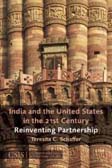An article by Teresita C. Schaffer and Suzanne Fawzi on the relationship between India and Iran in regard to energy trade, land access, and—of the most concern to the United States—defense.
In recent months, India’s ties with Iran have come under pressure as the civil-nuclear deal falters in New Delhi. Although maintaining positive relations with Washington is a critical foreign policy objective, India’s relations with Iran are important for reasons such as energy supply, geopolitics, and a symbol of India’s ability to retain an independent foreign policy or “strategic autonomy.” Although India and Iran share energy interests and some regional goals, there continues to be a wide gap between words and deeds.
Originally published in the Center for Strategic & International Studies’ South Asia Monitor on December 20, 2007. Read the entire article.



